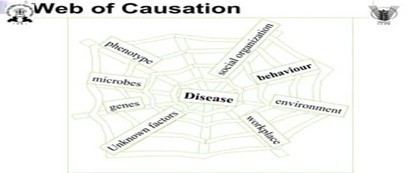Which of the following methods would be best if the nurse wanted to study the complex relationships among factors that contribute to chronic disease?
Environmental assessment
Web of causation
Correlation of incidence
Net of Impact
The Correct Answer is B
The Web of Causation model would be best for studying the complex relationships among factors that contribute to chronic disease. This model recognizes that chronic diseases result from the interplay of multiple factors at different levels, including individual, environmental, and societal factors. The model illustrates the complexity of these relationships and can help identify potential points for intervention.

Nursing Test Bank
Naxlex Comprehensive Predictor Exams
Related Questions
Correct Answer is B
Explanation
Epidural blocks are commonly used during labor to provide pain relief. However, they can also cause a sudden drop in blood pressure, known as epidural-induced hypotension, which can affect fetal oxygenation and fetal heart rate. Therefore, it is important to monitor maternal blood pressure frequently after an epidural block is administered.
While monitoring the maternal pulse is also important, hypotension is the most common complication of epidural anesthesia and can lead to decreased blood flow to the fetus. Therefore, monitoring maternal blood pressure is the priority.
Monitoring the fetus is also important, but it is not the most important intervention after an epidural block. Limiting parenteral fluids may be necessary in some cases to help prevent or treat hypotension, but it is not always necessary and should be done based on the individual situation.
Correct Answer is C
Explanation
This tool helps in assessing the severity of withdrawal symptoms in infants who were exposed to opioids during pregnancy. Based on the Finnegan score, the nurse can implement appropriate interventions to manage the symptoms and prevent complications. While offering the infant a pacifier with a drop of mom's breast milk or tightly swaddling the infant may be helpful for soothing the infant, these interventions may not directly address the underlying hyperreflexia associated with opioid withdrawal. Placing the infant under a radiant warmer is not indicated for managing hyperreflexia.
Whether you are a student looking to ace your exams or a practicing nurse seeking to enhance your expertise , our nursing education contents will empower you with the confidence and competence to make a difference in the lives of patients and become a respected leader in the healthcare field.
Visit Naxlex, invest in your future and unlock endless possibilities with our unparalleled nursing education contents today
Report Wrong Answer on the Current Question
Do you disagree with the answer? If yes, what is your expected answer? Explain.
Kindly be descriptive with the issue you are facing.
